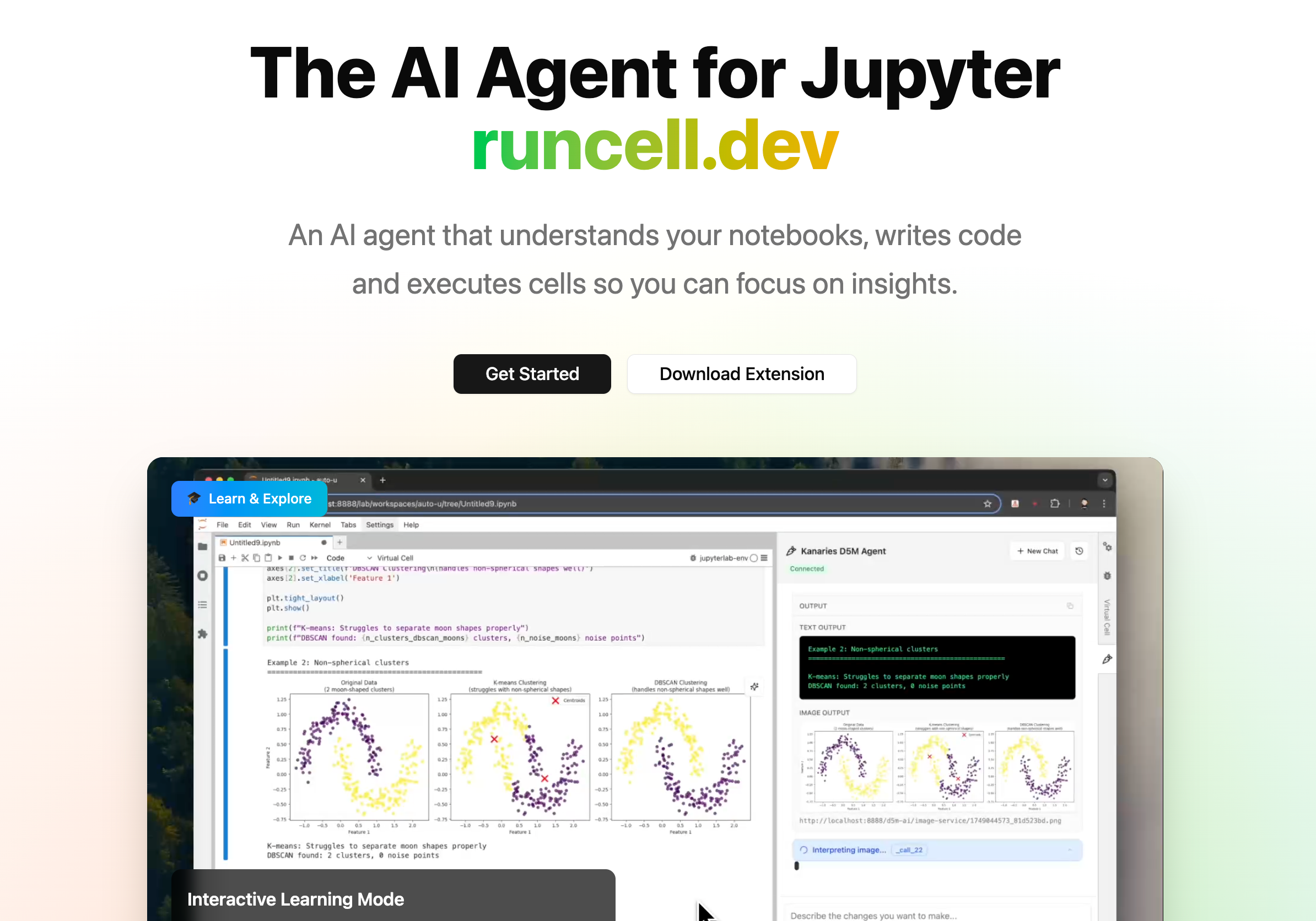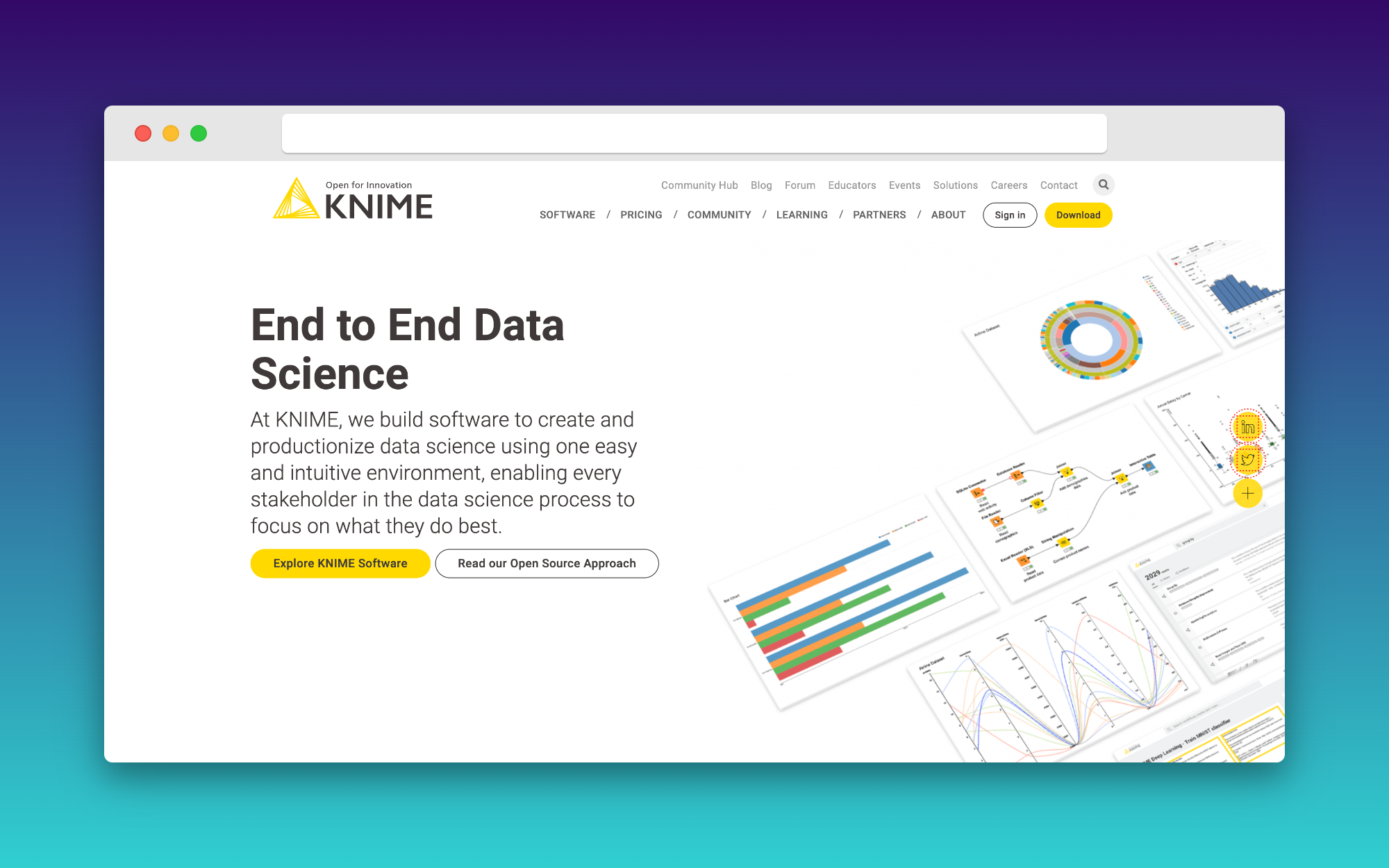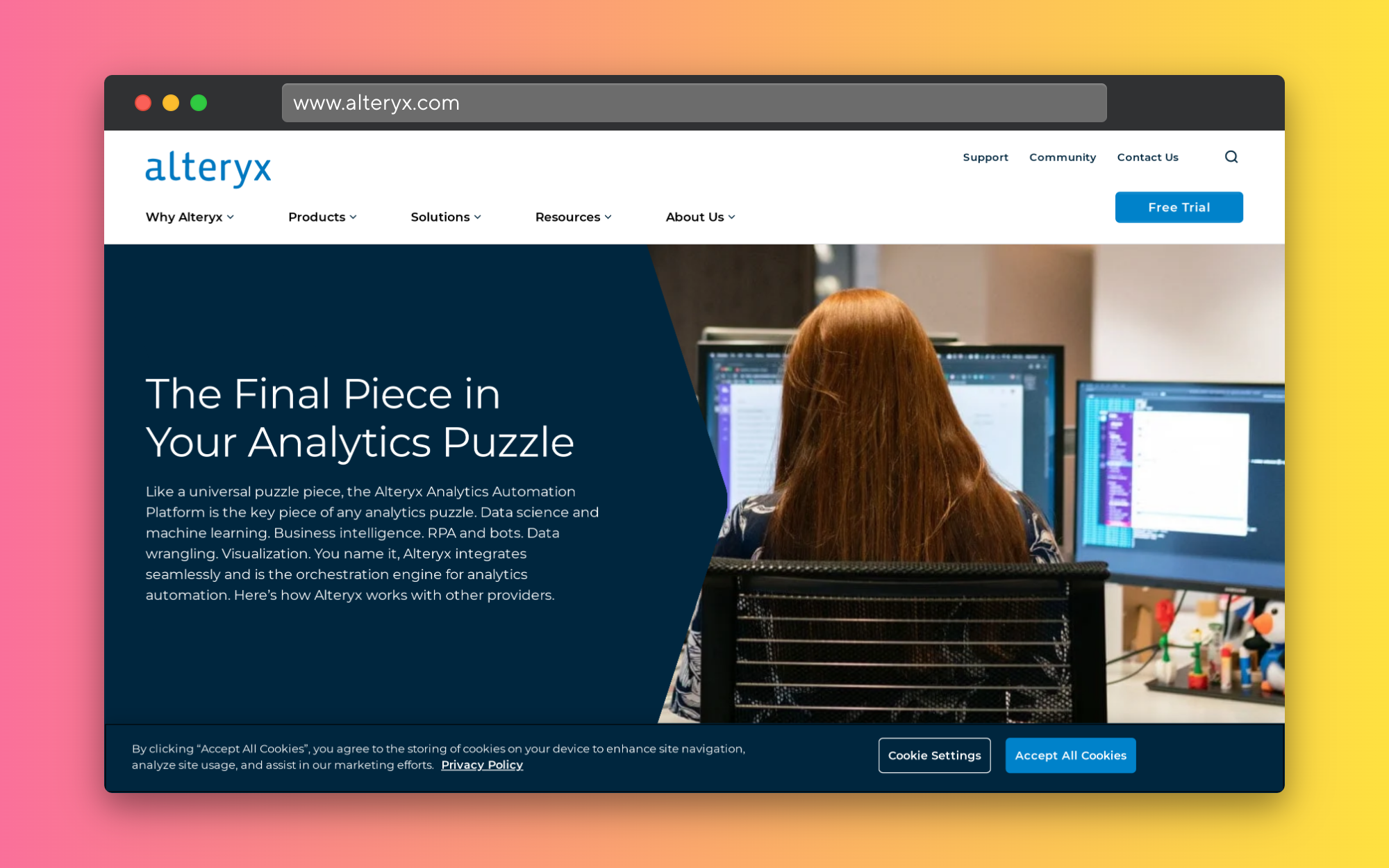Get Ahead in AI Data Analysis with These 5 Tools
Updated on
If you're in the business world, the term "AI data analysis" is probably not new to you. Maybe you've heard it in passing, or perhaps you're already harnessing its transformative power in your organization. But whether you're a seasoned pro or a newbie, understanding the ins and outs of this revolutionary tech is crucial in today's data-driven world.
What is AI Data Analysis?
AI data analysis, or AI analytics, is like a secret weapon in the world of business intelligence. It's a field that uses artificial intelligence, particularly machine learning, to automate the data analysis process.
Imagine having a never-tired, super-intelligent colleague who could constantly monitor, analyze, and make sense of tons of data in real-time. Sounds unreal, right? Well, that's exactly what AI data analysis brings to the table.
At its core, AI analytics goes beyond merely crunching numbers. It's about using sophisticated algorithms to glean meaningful insights from data and use these insights to predict outcomes, identify trends, and even make data-informed recommendations.
The AI Agent for Jupyter Notebooks
An AI agent that understands your notebooks, writes code and executes cells so you can focus on insights. Accelerate your data science workflow with intelligent automation that learns from your coding patterns.

AI Data Analysis vs. Traditional Analytics
To truly appreciate the power of AI data analysis, we need to look at how it stacks up against traditional analytics.
The traditional analytics process is usually pretty labor-intensive and time-consuming. Think about teams of data analysts hypothesizing, testing, and interpreting data to find meaningful insights. This approach can often take weeks, if not months, to yield substantial results.
In contrast, AI data analysis is all about speed, scale, and accuracy. It uses machine learning algorithms to automatically monitor and analyze vast amounts of data, providing valuable insights and predictions in real-time. This isn't just about saving time; it's about delivering a level of data understanding that's simply not possible with manual methods.
For instance, traditional analytics might struggle with the sheer volume of data points influencing an eCommerce conversion rate, but AI data analysis eats such challenges for breakfast! By continuously monitoring data, AI analytics can detect issues early on, thereby preventing potential revenue loss.
Real-World Applications of AI Data Analysis
Now, let's get down to the nitty-gritty. How can businesses practically benefit from AI data analysis?
Predictive Maintenance: One of the most effective applications of AI data analysis lies in predictive maintenance. AI can predict when equipment maintenance will be necessary, saving businesses significant costs related to equipment breakdowns and subsequent downtimes.
Demand Forecasting: AI-powered forecasting can significantly reduce errors in supply chain networks, contributing to a smoother and more efficient supply chain process.
Business Monitoring: AI data analysis can be used to monitor various business aspects from customer satisfaction to revenue generation and cost management, providing invaluable insights that drive business improvement.
Security Enhancement: In the fintech world, AI data analysis can help detect and prevent potential security threats, providing an extra layer of security that's crucial in today's digital age.
Conversion Optimization: In eCommerce, AI data analysis can monitor and analyze numerous data points that impact conversion rates. This can help businesses identify the factors driving or hindering conversions and devise strategies to enhance the customer journey and boost sales.
The Competitive Advantage of AI Data Analysis
So, how exactly does AI data analysis give businesses that coveted competitive edge?
Well, in the fast-paced and often unpredictable business landscape, the
ability to make swift, data-informed decisions is invaluable. AI data analysis allows businesses to do just that.
Let's be real, when it comes to making strategic decisions, you want to be as informed as possible. And what better way to be informed than by having a system that can analyze vast amounts of data, highlight crucial patterns, and even predict future outcomes?
RATH - Your AI Assistant for Automated Data Analysis and Visualization
RATH (opens in a new tab) is an AI-powered platform that transforms the way you explore and visualize your data. RATH does much more than just plotting your data; it discovers patterns, insights, and even causal relationships in your data, all at the click of a button.
What Makes RATH Stand Out?
- Automated Data Exploration: RATH automates the exploratory data analysis process, quickly identifying patterns, insights, and causals from your datasets. It's like having a data scientist assistant at your fingertips, delivering you critical information without you needing to sift through the data yourself.
- Copilot for Data Exploration: RATH is not just a tool, it's a copilot in your data science journey. It learns from your intends and preferences, generating recommendations that align with your needs.
- Data Preparation: RATH simplifies data wrangling with AI-enhanced automation, making data cleaning, transformation, and sampling much easier and more efficient.
- Embed Anywhere: The Graphic Walker feature is a lightweight, easy-to-use, and embeddable data visualization tool, allowing you to easily integrate it into your current workflow.
RATH supports a wide range of data sources. Here are some of the major database solutions that you can connect to RATH: MySQL, ClickHouse, Amazon Athena, Amazon Redshift, Apache Spark SQL, Apache Doris, Apache Hive, Apache Impala, Apache Kylin, Oracle, Snowflake, Google BigQuery and PostgreSQL.
RATH (opens in a new tab) is Open Source. Visit RATH GitHub and experience the next-generation Auto-EDA tool. You can also check out the RATH Online Demo as your Data Analysis Playground!
Tableau - Making Data Visualization More Accessible
Tableau (opens in a new tab) is renowned for making data visualization accessible to users at all levels of technical expertise. Its intuitive interface lets you create interactive and shareable dashboards that can provide rich insights at a glance.

Advantages of Tableau
- Interactive Visualizations: Tableau's strength lies in its ability to create dynamic and engaging visualizations. These allow users to better understand their data, making it easier to share insights and collaborate on data-driven decisions.
- Wide Range Integration: Tableau is built to play nice with a variety of data sources. Whether your data is stored in an Excel spreadsheet or a cloud-based database, Tableau can seamlessly integrate with it.
Apache Superset
Apache Superset (opens in a new tab) is an open-source data visualization and exploration platform that allows users to create and share interactive dashboards and visualizations. It is built on top of Flask and provides a wide range of visualization options and integration with various data sources.

KNIME - Flexible and Open Source Data Analytics
KNIME (opens in a new tab) is an open-source tool that allows users to analyze and visualize their data through an intuitive and flexible interface.

Advantages of KNIME
- Customizable Workflows: KNIME allows users to construct data flows, perform analytics, and visualize results all within the same environment. Users can customize workflows to their needs, with an extensive library of nodes providing added flexibility.
- Integration Capabilities: KNIME is compatible with a wide variety of data sources and technologies, including Python, R, and SQL, allowing for a seamless integration with existing workflows.
Alteryx - Empowering Data Workers to Unleash Potential
Alteryx (opens in a new tab) is designed to empower data workers, enabling them to blend, prep, and analyze data quickly and with ease.

Advantages of Alteryx
- Self-Service Analytics: Alteryx is designed with a focus on usability. With its intuitive drag-and-drop interface, users can access, clean, and analyze data in record time.
- Analytic Automation: Alteryx makes it possible to automate repetitive tasks, freeing up time and resources for data workers to focus on more value-added tasks.
Each of these five tools brings a unique approach to AI Data Analysis, and the best choice will depend on your specific needs, preferences, and the resources at your disposal.
Diving Deeper into AI Data Analysis
Now that we've explored the top 5 AI data analysis tools, let's delve into some specific areas of interest related to AI data analysis.
AI Data Analysis Software
AI data analysis software is becoming increasingly important in today's data-driven world. These software solutions leverage artificial intelligence to analyze large volumes of data and extract meaningful insights. RATH, Tableau, RapidMiner, KNIME, and Alteryx, as we've seen earlier, are all shining examples in this domain.
Free AI Tools for Data Analysis
There are also free AI tools that offer reliable data analysis capabilities, including Python libraries like Scikit-learn and TensorFlow, and plugins for Excel data analysis, such as Power Query and Power Pivot. These tools can be a great starting point for those new to AI data analysis.
AI Data Analysis Excel
Speaking of Excel, it's a popular tool for data analysis, and its capabilities have expanded significantly with the addition of AI. AI for Excel data analysis enables users to handle larger data sets and conduct more complex analyses. Power BI is an excellent tool that enhances Excel's AI capabilities.
Python AI Data Analysis
Python is another versatile tool for AI data analysis, thanks to its simplicity and powerful libraries. Python can be integrated easily with other tools, making it an excellent choice for building complex AI data analysis pipelines.
Applied AI Data Analysis Course
For those keen on upskilling in AI data analysis, there are several applied AI data analysis courses available. These courses cover a range of topics from the basics of AI, data preprocessing, to using tools like RATH and Python for data analysis.
Big Data Analytics AI Cognitive Analysis
AI cognitive analysis is a game-changer in the realm of big data analytics. It involves the use of AI to simulate human thought processes in a computerized model, allowing for quick and accurate analysis of large amounts of unstructured data.
Machine First AI Exploratory Data Analysis
Machine-first AI exploratory data analysis, such as what RATH offers, allows analysts to understand the main characteristics of a dataset before conducting more detailed analyses.
AI Qualitative Data Analysis
Lastly, AI is not just for numerical data; it's also highly effective for qualitative data analysis. Natural language processing, a subset of AI, is often used for analyzing human language in a way that is both meaningful and insightful.
Conclusion
Choosing the right tool for AI data analysis largely depends on your specific needs and the nature of the project you're working on. Each of these top five tools comes with its own set of features and strengths, and your choice should be informed by what best suits your goals.
Whether it's RATH's automated insights, Tableau's easy-to-understand visualizations, RapidMiner's comprehensive solution, KNIME's customizable workflows, or Alteryx's focus on empowering data workers, there's a tool out there that can help make your data analysis tasks more efficient and productive.
AI data analysis is becoming a fundamental part of many industries, and understanding how to leverage these tools will be essential in staying competitive in this data-driven world.
Frequently Asked Questions (FAQs)
Q1: Can AI be used for data analysis?
Absolutely! AI is a powerful tool in data analysis. It can handle large datasets and complex computations faster and more efficiently than traditional data analysis methods. Moreover, AI has the ability to learn from the data, making it capable of recognizing patterns and trends that might be difficult for humans to spot.
Q2: What is AI Analytics?
AI analytics is a branch of data science that uses artificial intelligence and machine learning to analyze and interpret data. It can include techniques like predictive analytics, which uses historical data to predict future outcomes, and prescriptive analytics, which uses data to suggest actions to take for optimal outcomes.
Q3: What is the data analysis process in AI?
The data analysis process in AI involves several steps. It starts with data collection, where data is gathered from various sources. Then, the data is cleaned and organized for analysis. AI algorithms are then used to analyze the data and extract insights. These insights are then interpreted and used to inform decision making.
Q4: What are the benefits of AI tools for data analysis?
AI tools for data analysis offer numerous benefits. They can handle large amounts of data quickly, recognize patterns and trends, and even make predictions based on the data. They also automate the data analysis process, which can save a significant amount of time and effort.
Q5: What are the best AI tools for data analysis?
There are many great AI tools for data analysis. Some of the top ones include RATH, Tableau, RapidMiner, KNIME, and Alteryx. The best tool for you depends on your specific needs and the nature of your data analysis project.
